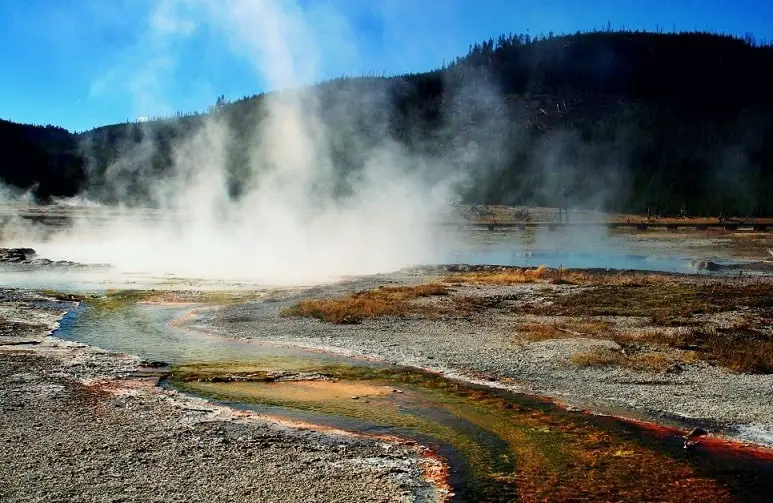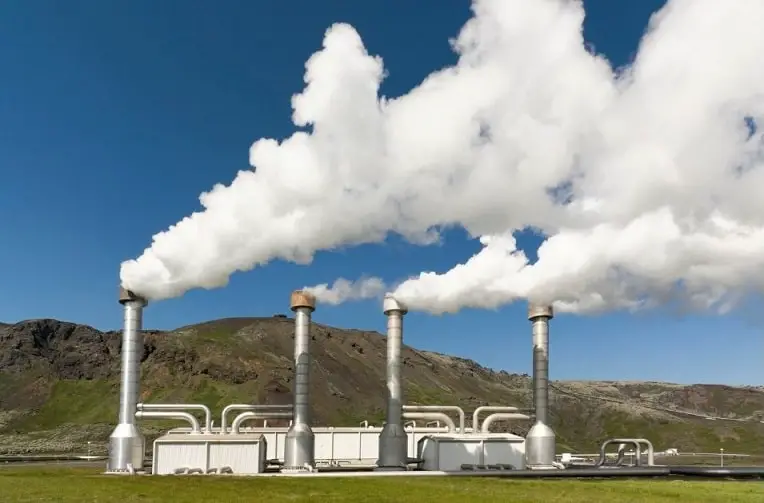Geothermal Energy: Renewable or Not?
Renewable energy is energy that is a clean, sustainable form of energy that comes from natural resources. There are many different types of renewable energy including solar power, wind power, and hydroelectric power.
These energy sources are derived from natural processes like sunrises and sunsets, pressure differentials between high and low-pressure systems in the atmosphere, and the gravitational pull of the moon and sun on the water.
We will always have access to these sources of energy as long as the Earth remains a viable planet.
One of the types of renewable energy is geothermal energy. It comes from the earth's heat, which is released from the core of the earth.
This energy is transferred to the earth's surface through volcanoes, hot springs, and geothermal wells. Then, that energy is used to generate electricity or heat buildings.

But does it qualify geothermal energy as renewable?
The answer is Yes. Geothermal energy is a renewable source of energy that is clean, reliable, and sustainable. It is sourced from the earth's natural heat, it is constantly being replenished.
Geothermal energy is a domestic resource with a minimum environmental impact. It produces no emissions unlike fossil fuels do and provides a consistent flow of energy that can be used in the form of electricity or heat.
Here are the qualities of geothermal energy that make it a great renewable resource:
Readily Available
Geothermal energy is readily available in most parts of the world. It can be used to generate electricity and heat in areas where other renewable resources, like solar and wind, are not available.
Although other renewable resources like solar, wind, hydropower are great they aren't always available when they are needed. For example, solar energy isn't available at night and wind energy isn't available when it's not windy.
That is why these types of renewable energy sources are known as “intermittent resources.” They only provide power when the conditions are right.
Geothermal energy, on the other hand, is always available. The earth's heat is constantly being released from the core of the planet and it can be used to generate electricity or heat buildings in areas where other renewable resources are not available.
For this reason, geothermal energy is called a “baseload resource”. It can be used to generate electricity and heat around the clock.
The only thing we need to do is find a suitable place to put the infrastructure in place. Obviously, certain areas of the world are better suited for geothermal development than others.
However, technology is constantly evolving as we find new extraction methods that make it possible to use geothermal energy in areas where it wasn't previously feasible.
Since geothermal energy is extracted in form of water or steam, it needs a healthy water cycle to function. However, this is not a problem at all.
Because geothermal reservoirs are also constantly replenished with the new water that seeps down from the surface. This means that geothermal energy can be used over and over again without damaging the earth's environment.
Causes minimum environmental impact
Let's face it, all renewable energy sources have some environmental impact. For example, if you use a solar panel to generate electricity, you need to have a place to put it.
The solar panels and other equipment used to capture and distribute solar energy take will have some environmental impact.

The same is true for wind turbines. They need to be placed in an area where there is enough wind to generate electricity. And, like solar panels, they will have an environmental impact from being built.
Hydropower is another renewable resource that can have a significant environmental impact. If you build a dam to create a hydroelectric power plant, you will potentially flood acres of land and disrupt the natural habitat of fish and other animals.
A similar is true for geothermal power plants. They need to be built near a geothermal reservoir and they will have an environmental impact.
However, the environmental impact of geothermal power plants is much less than the environmental impact of other renewable resources.
This is because geothermal energy doesn't require a lot of lands. And, unlike solar, wind, and hydroelectric power plants, geothermal power plants don't need to be built near a waterway.
Geothermal power plants can be built almost anywhere as long as there is an available geothermal reservoir.
Building a geothermal power plant is less carbon-intensive than building a solar or wind power plant. This is because the machinery used to generate geothermal energy isn't as complex as the machinery used to generate solar or wind energy.
This means that less carbon dioxide is emitted into the atmosphere during the manufacturing, transportation, and installation of geothermal power plants.
That said, extracting geothermal energy requires drilling into the earth's surface. Therefore, it can cause some minor seismic activity, release greenhouse gases from the earth's crust, and has the potential to contaminate groundwater.
Additionally, building a geothermal power plant also requires land that could be used for other purposes if it weren't for the plant. Additionally, the plant needs to be manned and operated, so it will have some on-site carbon footprint.
However, when compared to other forms of energy production, the environmental impact of geothermal energy is relatively minor.
And, as technology improves and we find ways to mitigate these impacts, the use of geothermal energy will become increasingly more sustainable.
Geothermal energy does not produce any emissions or pollutants like the burning of fossil fuels does. Thus, in this aspect, it is much more environmentally friendly.
Simpler To Scale Energy Production
Geothermal energy is a great form of energy because it is simple to scale. This is in contrast to solar and wind power, which are more difficult to scale.

This is because you need a lot of lands to install a lot of solar or wind turbines. And, you need to invest in new equipment with auxiliary systems to build a functional solar or wind farm.
This means as your energy needs grow, you don't need to have a lot of lands, and new equipment can be added very easily.
All you need is an available geothermal reservoir and some pipes to pump the water from the reservoir to the power plant. The power plant can be as big or as small as you need it to be, and new plants can easily be added to increase the energy output.
This makes geothermal energy a very scalable form of energy that can be used to meet the needs of any community or country. Once there is an available geothermal reservoir, the plant can be built very quickly and it will not require a lot of additional infrastructures.
This is in contrast to scaling solar and wind energy, which requires a lot of new infrastructures to be built before they can generate any significant amount of energy.
Domestic Form Of Energy
Geothermal energy is a domestic form of energy that can be sourced in many countries around the world. However, the availability of geothermal reservoirs varies from country to country.
This is because different countries have different geological makeups. For example, Iceland has a lot of geothermal reservoirs because it is located on a hot spot in the Earth's mantle.
That said, with the right technology, geothermal energy can be sourced almost anywhere in the world.
Never Ending
Geothermal energy is a never-ending form of energy. Similar to solar and wind energy, the amount of geothermal energy available is infinite.
This is because the Earth's heat is constantly being replenished through the radioactive decay of minerals in the Earth's crust, and the heat from the sun.
This means that as long as we have the Earth, we will always have access to geothermal energy.
Conclusion
Geothermal energy is a renewable form of energy that has a relatively small environmental impact. It is simple to scale and can be used almost anywhere in the world.
Additionally, it is a domestic form of energy that is constantly being replenished. As technology improves, the use of geothermal energy will become increasingly more sustainable.
So far, it has been the only form of energy that can meet our baseload energy needs.
Finally, geothermal energy is an infinite source of energy. This means that we will always have access to geothermal energy as long as the Earth exists.




